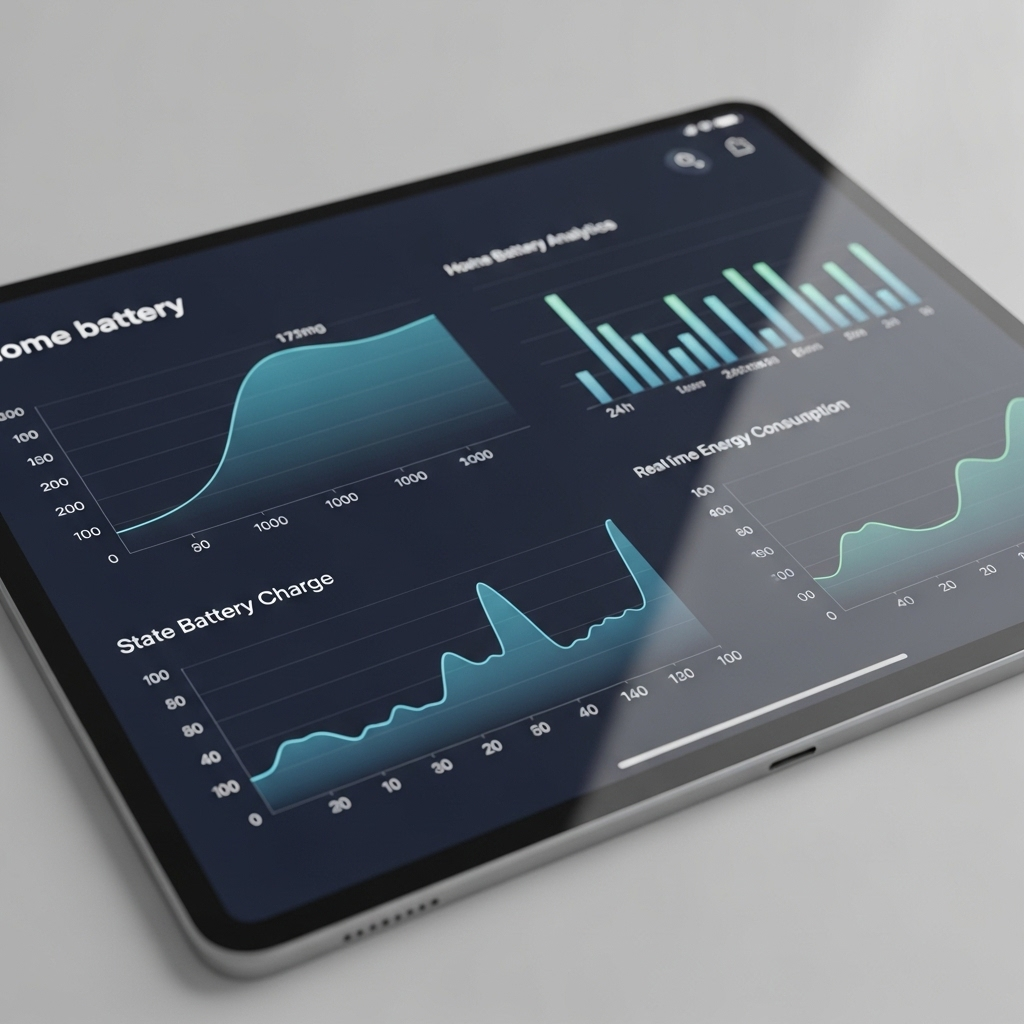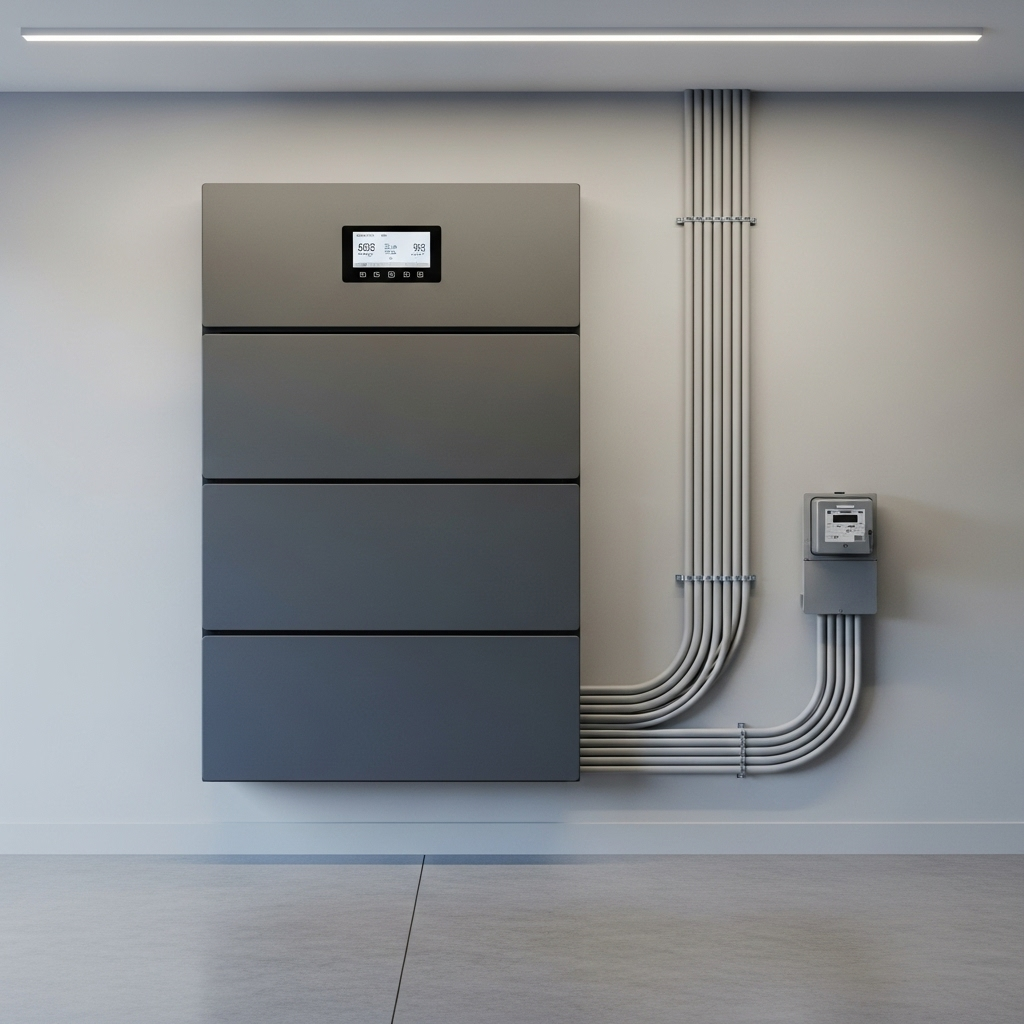A home battery system is a significant step toward energy independence. It stores the solar energy you generate, providing power during outages and reducing reliance on the grid. But this powerful asset requires proper care. Simply installing it and forgetting about it can lead to rapid performance decline. Effective home battery monitoring is key to protecting its longevity. Avoiding a few common errors ensures you get the maximum value and lifespan from your residential energy storage system.
1. Ignoring State of Charge (SoC) Limits
State of Charge refers to the current charge level of your battery, like a fuel gauge for your energy storage. Consistently pushing it to its absolute limits is one of the fastest ways to cause damage.
The Danger of Extremes
Think of a lithium-ion battery like a rubber band. Stretching it to its maximum capacity (100% SoC) or letting it go completely slack (0% SoC) puts immense stress on its internal components. Overcharging can cause plating of metallic lithium on the anode, while deep discharging can degrade the cathode. Both scenarios accelerate capacity loss, meaning your battery will hold less energy over time.
Setting Protective Buffers
A smart strategy is to operate your battery within a healthy range. Most experts recommend setting a lower limit of around 20% and an upper limit of 90-95%. This practice creates a protective buffer that significantly reduces stress on the battery's chemistry. Modern Battery Management Systems (BMS) allow you to configure these thresholds, automating the protection process and extending the battery's operational life.
2. Disregarding Temperature Extremes
The environment where your battery operates has a direct impact on its health and performance. Lithium-ion batteries are sensitive to temperature, and both excessive heat and cold can be detrimental.
How Heat and Cold Affect Battery Chemistry
High temperatures accelerate the chemical reactions inside the battery, leading to faster degradation of components and a permanent reduction in storage capacity. A battery consistently operating above 30°C (86°F) will have a noticeably shorter lifespan than one kept in a cooler environment. Conversely, extreme cold slows down the electrochemical process, reducing the battery's ability to deliver power efficiently. Charging a battery in freezing temperatures can cause irreversible damage.
Proactive Thermal Management
Ensure your battery is installed in a location with adequate ventilation, away from direct sunlight and other heat sources. A garage or basement is often a better choice than an outdoor location exposed to the elements. For systems in harsher climates, choosing a battery with an integrated thermal management system can actively heat or cool the cells to maintain an optimal temperature range.
3. Overlooking Depth of Discharge (DoD)
Depth of Discharge is the percentage of the battery's total capacity that has been used. It is inversely related to cycle life; the deeper you regularly discharge the battery, the fewer cycles it will last.
The Relationship Between DoD and Cycle Life
A cycle is one full charge and discharge. A battery that is regularly discharged to 80% of its capacity will last for significantly more cycles than one that is consistently drained to 20% or less. For example, a LiFePO4 battery might offer over 6,000 cycles at a 80% DoD but only 3,000 cycles at a 100% DoD. This highlights how managing discharge depth is a powerful tool for extending lifespan.
| Depth of Discharge (DoD) | Estimated Cycle Life |
|---|---|
| 100% | ~3000 Cycles |
| 80% | ~6000 Cycles |
| 50% | ~10000 Cycles |
Balancing Daily Use with Longevity
For daily use, configure your system for shallower discharge cycles. You might aim to use only 40-60% of the battery's capacity overnight, preserving the rest. This approach keeps the battery in a low-stress state. You can reserve deeper discharges for when they are truly needed, such as during an extended power outage, ensuring both daily performance and long-term durability.
4. Neglecting Regular Performance Reviews
Your battery monitoring app is more than just a novelty; it's a diagnostic tool. Ignoring the data it provides means you could miss early warning signs of developing issues.
Tracking Capacity Fade Over Time
All batteries experience capacity fade, which is the gradual loss of their ability to hold a full charge. This is a key metric for understanding battery health. By checking your monitoring data quarterly, you can track this degradation. A slow, steady decline is normal. However, a sudden drop in capacity can indicate a problem with a cell or a system setting that needs immediate attention. For a deeper understanding of key metrics, the ultimate reference for solar storage performance offers valuable insights into what to track.
Spotting Anomalies Early
Beyond capacity, look for other irregularities. Are charging and discharging times consistent? Are there any unusual voltage fluctuations between battery cells? According to research from the U.S. Department of Energy, real-time monitoring data is crucial for optimizing performance. Spotting these issues early allows you to address them before they cause significant damage.
5. Misinterpreting Monitoring App Data
Having data is one thing; knowing what to look at is another. Many users focus on superficial metrics while ignoring the ones that truly define battery health.
Focusing on the Wrong Metrics
Real-time power flow (how much energy is going in and out) is visually engaging, but it doesn't tell you much about the battery's condition. More important metrics include State of Health (SoH), which is a measure of its remaining capacity compared to its original capacity, and cell voltage balance. If one cell's voltage is consistently different from the others, it could signal an internal issue that the BMS is working to correct.
The Importance of Historical Trends
A single data point is rarely useful. The true insights come from analyzing trends over weeks and months. Is efficiency slowly declining? Is the battery taking longer to charge under similar solar conditions? These historical patterns provide a much clearer picture of your battery's health trajectory than a snapshot of a single day's performance.
6. Ignoring Inverter and System Mismatches
Your battery is part of a larger ecosystem that includes solar panels and an inverter. If these components are not configured to work in harmony, the battery often pays the price.
How Inverter Settings Affect the Battery
The inverter controls how quickly the battery charges and discharges. If the charge rate is set too high for the battery's specifications, it can cause overheating and stress. Likewise, incorrect voltage cutoffs can lead to consistent overcharging or deep discharging. It's vital to ensure the inverter's settings are perfectly matched to the battery's recommended parameters.
Ensuring System Harmony
An integrated system, where the battery, inverter, and BMS are designed to work together, often prevents these issues. When using components from different manufacturers, triple-check that their specifications are compatible. A mismatch can lead to inefficiencies and place undue strain on the battery, shortening its life.
7. Relying Solely on Automated Alerts
While the automated alerts from your monitoring system are helpful, they are not a substitute for proactive management. They are designed to catch critical failures, not subtle performance degradation.
The Limits of Default Settings
Automated alerts are typically based on factory-default thresholds. These may not be optimized for your specific climate, usage patterns, or energy goals. An alert might only trigger when a problem has already become severe, missing the opportunity for early intervention.
The Value of Manual Check-ins
A brief, manual review of your system's data once a month can help you develop a better feel for its normal operating behavior. This familiarity allows you to spot subtle deviations that an automated system might overlook. As noted in a report by the International Renewable Energy Agency (IRENA), the introduction of advanced monitoring has incentivized investments in responsive resources like battery storage. By taking an active role, you become a better manager of your own energy asset.
Protecting Your Energy Future
Your home battery is the core of your energy independence. Proactive and informed monitoring is the most effective way to protect this investment. By avoiding these common mistakes, you can prevent premature degradation, enhance performance, and ensure your system delivers reliable, clean energy for many years. A few minutes of review each month can translate into years of additional battery life.
Disclaimer: This article is for informational purposes only and does not constitute financial or legal advice. Consult with a qualified professional for system-specific recommendations.
Frequently Asked Questions
How often should I check my home battery's performance?
A quick check of your monitoring app weekly is a good habit to ensure everything is running smoothly. A more detailed review of historical data and performance trends on a monthly or quarterly basis is recommended to track long-term health.
What is a 'healthy' rate of battery degradation?
Most high-quality lithium-ion batteries, like LiFePO4, are warrantied to retain at least 70-80% of their original capacity after 10 years or a specific number of cycles. A capacity loss of 1-2% per year under normal use is generally considered a healthy rate of degradation.
Can I reverse battery degradation?
No, battery degradation is an irreversible electrochemical process. Once capacity is lost, it cannot be restored. This is why proactive monitoring and preventative care are so critical. The goal is to slow the rate of degradation as much as possible to maximize the battery's operational lifespan.





Leave a comment
All comments are moderated before being published.
This site is protected by hCaptcha and the hCaptcha Privacy Policy and Terms of Service apply.